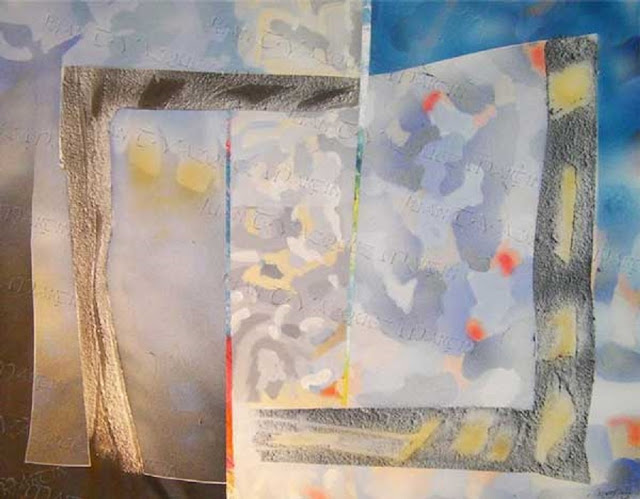Juan T. Vázquez Martín (born December 23, 1940 - January 31, 2017 ) Cuban abstract painter. A Cuban painter who lived and worked in Havana.
'Looking at Juan Vázquez Martín's paintings, what is immediately recognisable, is the Renaissance concept of 'the window', the dissolution of forms discovered by Kandinski, as well as the sense of textural beauty introduced by the contemporary painters of the matière school.In essence, this involves a private display that allows the artist to make a series of paintings on canvas or cartridge paper, revealing to the viewer an ensemble of optical sensations that reflect the internal world of the artist.We should not forget - because it was forgotten during the period of aesthetic and generational reductionism of the 1980s - that Vázquez Martín was a direct heir, in the 1960s, of the national abstract movement of the 1950s.
Nor should we lose sight of the fact that Juan Vázquez Martín, even when beleaguered in his career, never deviated from his artistic logic - a logic that kept alive and active non-representational forms of plastic art. He used the criterion of symbiotic expression by joining figurative and abstract elements in his overall scheme of things, coalescing them into ectoplasmatic forms, almost veils, that distinguished him in the Cuban canon of painters of the late 1960s and early 1970s. This distinguishing feature of his artistic personality is revealed in simply 'beautiful paintings' - it should be no crime to say so! - paintings in which perceptions of the environment are blended with intimate poetry.Trying to define Vázquez Martín's works of art, applying a label to his paintings from one period to another, is almost impossible, save for a tendency towards 'abstract' painting; if pressed, you might call them 'lyric' or 'art autre', 'post' or 'neo' colour paintings.His style is a skilful blend of the organic with geometry, of order with dissonance, of precise vision with suggestion. It is a whole language in itself, sincretic, and bearing a strong current of delight springing from the possibilities that he coaxes from the materials, methods and tools he uses to work with, the very keys to his paintings. "(Critique by Manuel López Oliva, Cuban Painter and Art Critic, 1996. Translated by Marigold Best and Rayner Reissenberger.)
'Looking at Juan Vázquez Martín's paintings, what is immediately recognisable, is the Renaissance concept of 'the window', the dissolution of forms discovered by Kandinski, as well as the sense of textural beauty introduced by the contemporary painters of the matière school.In essence, this involves a private display that allows the artist to make a series of paintings on canvas or cartridge paper, revealing to the viewer an ensemble of optical sensations that reflect the internal world of the artist.We should not forget - because it was forgotten during the period of aesthetic and generational reductionism of the 1980s - that Vázquez Martín was a direct heir, in the 1960s, of the national abstract movement of the 1950s.
Nor should we lose sight of the fact that Juan Vázquez Martín, even when beleaguered in his career, never deviated from his artistic logic - a logic that kept alive and active non-representational forms of plastic art. He used the criterion of symbiotic expression by joining figurative and abstract elements in his overall scheme of things, coalescing them into ectoplasmatic forms, almost veils, that distinguished him in the Cuban canon of painters of the late 1960s and early 1970s. This distinguishing feature of his artistic personality is revealed in simply 'beautiful paintings' - it should be no crime to say so! - paintings in which perceptions of the environment are blended with intimate poetry.Trying to define Vázquez Martín's works of art, applying a label to his paintings from one period to another, is almost impossible, save for a tendency towards 'abstract' painting; if pressed, you might call them 'lyric' or 'art autre', 'post' or 'neo' colour paintings.His style is a skilful blend of the organic with geometry, of order with dissonance, of precise vision with suggestion. It is a whole language in itself, sincretic, and bearing a strong current of delight springing from the possibilities that he coaxes from the materials, methods and tools he uses to work with, the very keys to his paintings. "(Critique by Manuel López Oliva, Cuban Painter and Art Critic, 1996. Translated by Marigold Best and Rayner Reissenberger.)













No comments:
Post a Comment